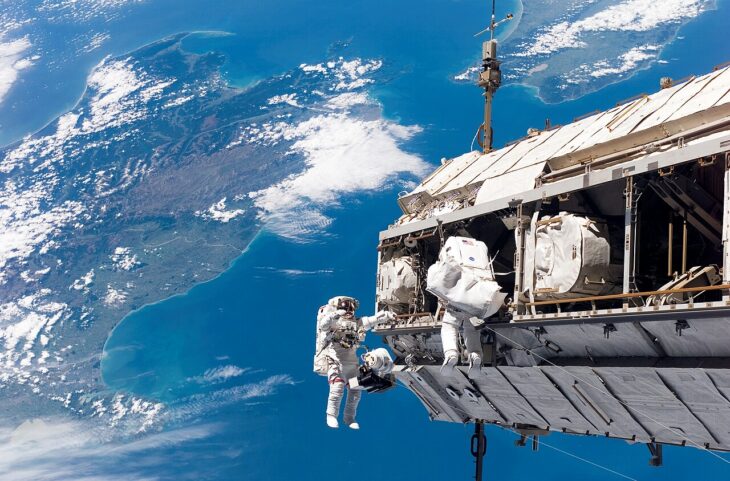Astronauts face many risks from space travel, including increased radiation, cold temperatures and extreme isolation. During space flights, astronauts also experience lower gravity than they do on Earth, a situation known as microgravity.
Microgravity reduces bone density and muscle strength, and alters blood pressure. It also impacts the immune system. In fact, half of Apollo mission crew members reported bacterial or viral infections after returning from space, suggesting their immune systems were weakened, or suppressed. Scientists have since confirmed that microgravity can stop our immune system from functioning properly, but they don’t know exactly how.
Researchers in the past have shown microgravity can disrupt a type of immune cells called T-cells. T-cells help our bodies build up immunity against diseases over time, known as the adaptive immune response. Before a T-cell encounters a pathogen for the first time, it circulates the body in an inactive state, known as a naive T-cell. When a pathogen invades, naive T-cells are activated and work with other immune cells to fight the infection. Afterwards, the body retains a small number of T-cells that remember the pathogen, called memory T-cells, to protect it if the same infection returns. Scientists want to understand more about how microgravity impacts these T-cells, to better predict how space flight affects the immune system.
Although scientists would ideally study the effects of microgravity in space, experiments in space involve extensive logistical and financial arrangements. Therefore, researchers have developed several Earth-based technologies that can now simulate microgravity. One such technology includes a bathtub-like structure filled with 31°to 35°C (or 88 to 95°F) water, called a dry immersion bed. Volunteers in a dry immersion bed are protected with a waterproof membrane and submerged to neck level. While floating in the water, volunteers experience a degree of weightlessness comparable to microgravity.
A team of researchers in Sweden and Russia recently used dry immersion technology to study how microgravity affects T-cells in a group of volunteers. They asked 8 healthy male volunteers to lay in dry immersion beds for 3 weeks, and collected blood samples once a week and 7 days after the experiment ended. The researchers then isolated T-cells from the volunteers’ blood samples for genetic analysis.
A T-cell in each of its naive, activated, or memory states uses a different group of genes. For example, an activated T-cell triggered by an infection turns on genes that help it communicate with other immune cells and protect the body. Scientists can study which genes are turned on to tell which state a T-cell is in, using a technique called RNA sequencing. RNA sequencing measures how active a gene is based on how many copies of its template there are in the cell.
The researchers used RNA sequencing to build a profile, like a fingerprint, of T-cell gene activity for each volunteer at each time point. By tracking these gene activity profiles, they found that after 2 weeks in dry immersion beds, the volunteers’ genes that drive T-cells to respond to an infection were less active. In other words, the volunteers’ T-cells resembled a more naive state. The authors explained this could mean the volunteers’ T-cells would take longer to be triggered by an infection, and thus be less effective at fighting it.
The scientists also observed the volunteers’ genes that help T-cells develop into other cell types, like memory T-cells, were less active. After 3 weeks, the researchers noticed the volunteers’ T-cell gene activity profiles began to resemble those at the start of the experiment, before they entered the dry immersion beds. The researchers suggested this meant the T-cells were adapting to the dry immersion experience. They found 7 days after the volunteers left the dry immersion beds their T-cells once again changed gene activity profiles, showing a pattern different than they did at the start of the experiment or during dry immersion. The researchers hypothesized the T-cells activated another set of gene pathways to re-acclimatize to Earth’s regular gravitational forces.
While the researchers showed the volunteers’ T-cells shifted to a naive state under simulated microgravity, they pointed out several ways to further test their conclusions. First, they acknowledged their experiments included only male volunteers, so future researchers should study the T-cell response in female volunteers. Second, they suggested that researchers should test how T-cells from volunteers in microgravity respond to infections in a lab, to validate whether they indeed converted to the naive state their RNA sequencing predicted.


